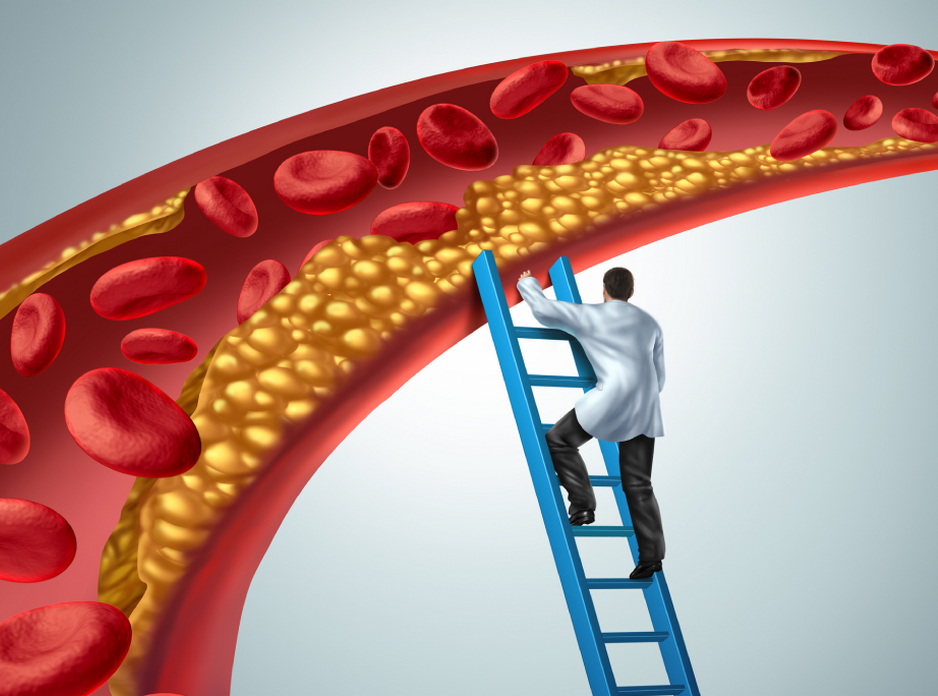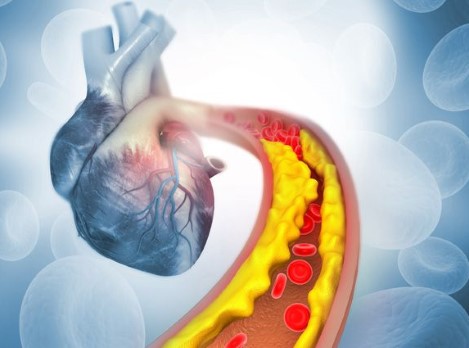Cardiovascular disease (CVD) is the leading cause of death worldwide. Prescribing statins for primary and secondary prevention of CVD reduces the risk of adverse cardiovascular events by lowering low-density lipoprotein cholesterol (LDL-C). However, in some clinical cases, despite the use of high-dose statin therapy, patients have residual cardiovascular risks, in particular due to the lack of efficacy of monotherapy. An alternative for for this cohort of patients may be a combination of statins and ezetimibe. It is known that CVD is the leading cause of death worldwide [1]. In particular, in 2019, among the total of 56.5 million deaths, 32.8% (18.6 million) were due to CVD. CVD-related deaths, which is 17.8% (10.1 million) higher than deaths from tumours [2]. The most common causes of death from CVD include coronary heart disease (2.0%; 1.2 million) and hypertension [2]. Risk factors for developing CVDMetabolic, behavioural, environmental and occupational risk factors have a negative impact on the development and progression of CVD [1, 3-6]. High systolic blood pressure, diet, and LDL cholesterol levels are among the are the main risk factors for CVD, accounting for 25.0; 17.2 and 11.0% of CVD deaths, respectively [2]. Target LDL cholesterol levelsMost patients with dyslipidaemia do not achieve optimal LDL cholesterol levels by changing lifestyle changes and taking affordable and accessible statins [7-11]. Thus, according to the multicentre DA VINCI study, only 33% of 5888 patients with dyslipidaemia reached the target LDL-C level, recommended by the European Society of Cardiology (ESC). Society (ESC, 2019) [12]. In different European countries, a similar trend is observed. There is a similar trend in different European countries [13-15]. The data of the Australian Australian study involving 61,407 patients showed that only 36% of participants reached the recommended levels of LDL-C [16]. Analysing data from 44 million US residents. analysing data from 44 million US residents, only 36% of patients with a high risk of CVD had the recommended level of LDL-C <70 mg/dL (~1.8 mmol/L) [17]. There are several reasons why most patients do not achieve the required LDL-C levels. Firstly, according to the recommendations of the European to the recommendations of the European Society of Cardiology Society (ESC, 2019) and the leading US cardiology associations of the American Society of Cardiology / American College of Cardiology. American College of Cardiology (AHA/ACC, multi-society 2018) – it is necessary to achieve a more significant LDL cholesterol reduction, in accordance with the principle of “the lower the better” [18-20]. For example, the target LDL-C levels for high-risk patients was reduced to <1.8 mmol/l. Secondly, there is a simple is the lack of interest of patients in reducing their LDL-C levels. LDL-C levels through lifestyle changes or regular pharmaceutical treatment. pharmacological treatment due to insufficiently fast results. An additional obstacle may also be the high prices of new drugs, such as PCSK9 inhibitors, which that need to be taken to quickly achieve the goals of treatment goals. Given that 9.1% of patients are intolerance to statins, alternative approaches to to lowering cholesterol may not be enough. Drugs for the correction of dyslipidaemiaThe ESC (2019) and AHA/ACC/multi society (2018) provide a list of pharmaceutical preparations drugs that can be used to lower blood lipids in the blood and reduce the risk of CVD in patients with dyslipidaemia (Table). According to these guidelines, statins are the first line of therapy for primary and secondary prevention of CVD prevention of CVD in patients with hypercholesterolaemia and hyper triglyceridemia. The mechanism of action of statinsStatins help to reduce the synthesis of cholesterol in the body by competitively inhibiting the enzyme 3-hydroxy-3-methylglutaryl-coenzyme A (HMG-CoA) reductase [19]. Reducing the synthesis of cholesterol in the liver in the liver leads to an increase in the surface expression of of LDL-C receptors, which, in turn, increases LDL cholesterol absorption, leading to a decrease in of LDL-C, ApoB-100 and triglycerides in the blood serum. blood. Due to competitive inhibition of HMG-CoA, the dose-dependent effectiveness of statins is used in clinical practice to escalate treatment from low- to to high-intensity statin therapy for patients at risk. therapy for patients at risk. It is known that statins low/medium intensity statins are known to reduce LDL cholesterol by 30-50% and triglycerides by 20%, while while high intensity statins – by >50 and 40%, respectively [19, 31]. At the same time, statins can increase the level of cholesterol sterol of high-density lipoprotein (HDL) levels by 10%, depending on the dose [32]. According to studies, in patients treated with statins statins, no significant increase in the level of lipoprotein (a) [Lp(a)] [33, 34]. Table. Lipid-lowering therapy for the prevention of cardiovascular diseases Name MoA Type RoA LDL CHOLESTEROL TG MACE Statins of low / medium intensity Inhibition of HMG-CoA reductase, pleiotropic Pills Once a day, p.a. -30% -20% -22% High-intensity statins Inhibition of HMG-CoA, pleiotropic Pills Once a day, p.a. -50% -40% -15% а Ezetimibe Inhibition NPC1L1 Pills Once a day, p.a. -24% -12% -6% Evolocumab Inhibition PCSK9 Injections Раз на 2 тижні/ щоміÑÑцÑ, п.Ñ. -60% -26% -15% Alirocumab Inhibition PCSK9 Injections/td> Once every 2 weeks/ monthly, p.p. -60% -26% -15% Fibrates Activation PPARa Pills Once a day, p.a. -20% -50% -10% Icosapent ethyl Reduction of TG levels, pleiotropic Pills Twice a day, p.o. -6% -20% -25% Note. a The reported reduction in MACE for high intensity statins refers to the additional benefit compared with low/medium intensity statins. HMG-CoA – 3-hydroxy-3-methylglutaryl coenzyme A, LDL-C – low-density lipoprotein cholesterol (LDL-C), MACE – major adverse cardiovascular events. MoA mechanism of action, NPC1L1 – Niemann-Pick C1-like protein, PCSK9 – proprotein convertase subtilisin-kexin type 9, PO (p.o.) – oral oral, PPAR-α – peroxisome proliferator-activated receptor alpha, RoA – route of administration, SC – subcutaneously, TG(TG) – triglycerides. Adapted from D. T. Michaeli, 2023. In addition to changes in blood lipid levels, the results of in vitro and in vivo studies have confirmed that statins have beneficial cardioprotective pleiotropic effects, such as Improvement of endothelial dysfunction, increased bioavailability of nitric oxide; antioxidant properties properties, suppression of inflammatory reactions and stabilisation of atherosclerotic plaques

